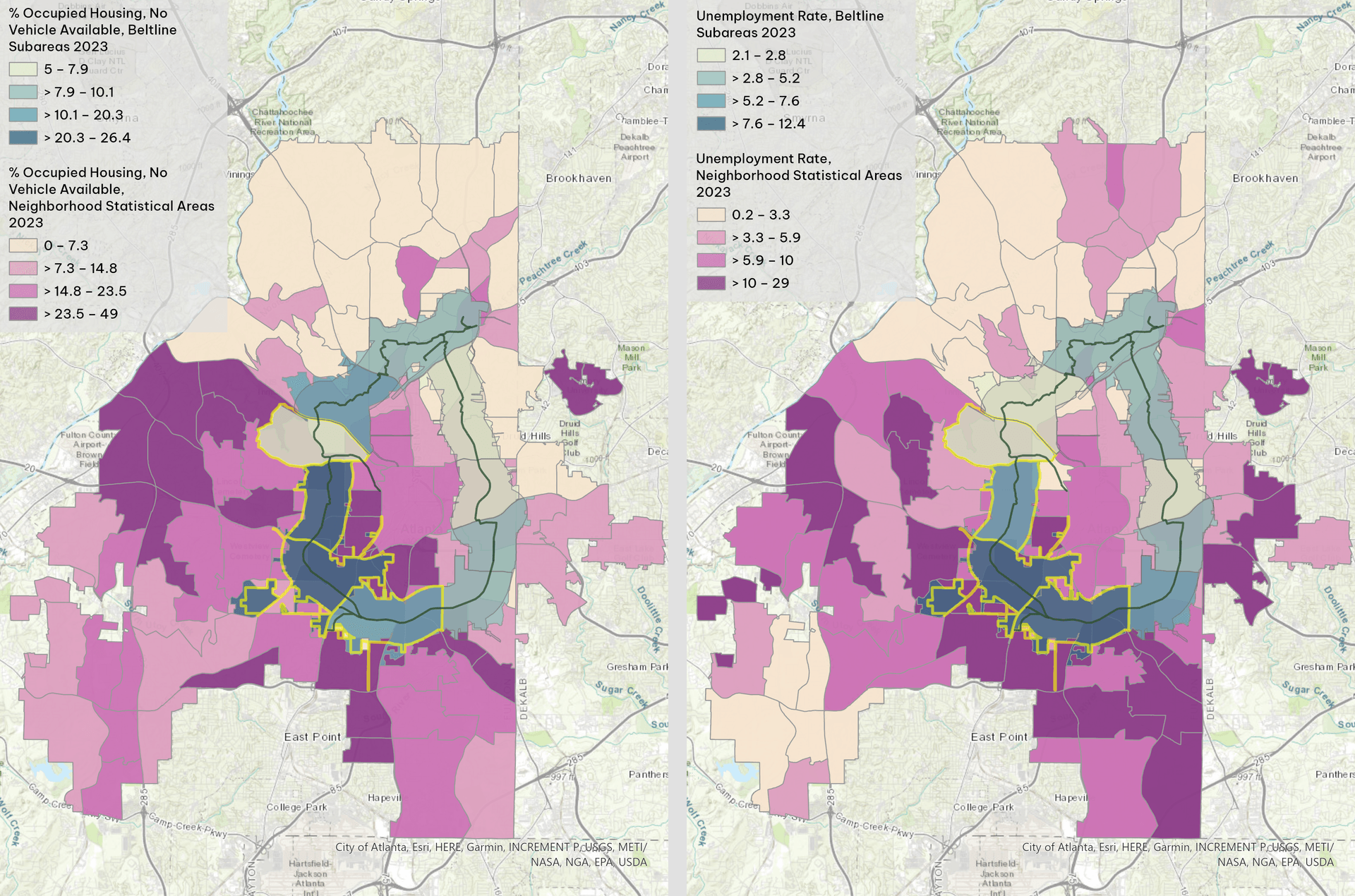Neighborhood Stabilization: What it Means and Why it Matters for Atlanta’s Future
- Data
- Communities

We all love a good headline about Atlanta. Whether it’s being named one of the best places to live, a top city for starting a career, or a must-visit destination, we’re proud of the city we call home and how the Atlanta Beltline has contributed to that success.
But here’s a headline that deserves just as much attention: Atlanta ranks last among the 50 largest U.S. metro areas for economic mobility.
That means a child born into poverty in Atlanta has less chance of climbing the economic ladder than in any other big city in the country. That’s not just a number; it’s a challenge we must meet together. The good news? Cities in similar positions have turned things around. With smart policies and focused investments, we can improve social mobility for our residents in just one generation. And at the Beltline, we’re determined to be part of that change.
Stabilizing neighborhoods; uplifting residents
The Beltline has transformed Atlanta over the past 20 years, and with that transformation comes responsibility. Our work isn’t just about creating trails or new developments; it’s about building an Atlanta where long-time residents, small businesses, and families can thrive without being pushed out.
Over and over, research shows that the places where we live play an outsize role in our lifelong outcomes. That’s why the Beltline focuses on neighborhood stabilization, focusing our investments on areas where we can make the biggest difference in helping residents stay, grow, and succeed.
We use four key community-level indicators to determine where we prioritize our efforts:
Income: Atlanta’s wealth gap didn’t appear overnight. Dismantling the structures that created it is at the heart of our programs.
Unemployment: Job access and stability are essential to well-being and economic mobility.
Vehicle Availability: Transportation connects people to jobs, education, healthy food and medical care. The Beltline is a transit corridor at its core, and access matters.
Housing Cost Burden: When families spend more than 30% of their income on housing, it limits their ability to afford essentials like food and child care, and it also affects health and well-being.
Where we focus
When looking at these four metrics (maps below), we see an undeniable pattern: Residents around the Southside and Westside Beltline corridors have lower median incomes, greater housing cost burden, less vehicle access, and higher unemployment. We call these areas our Neighborhood Stabilization Subareas (highlighted in yellow, below).
These communities are where we direct our efforts through affordable housing initiatives, support for small businesses, and partnerships with historically disadvantaged contractors. What is our goal? To create opportunities that help residents build wealth, stay in their homes, and thrive.
Embracing Complexity
The macro trends guide us, but we know data doesn’t tell the whole story. Take Subarea 9, our northernmost Neighborhood Stabilization Subarea. When we look at our metrics on paper, it might not appear as challenged as other areas.
But beneath the surface, neighborhoods like Grove Park tell a different story, with incomes significantly lower than nearby communities and growing pressure from rising costs.
That’s why we don’t just look at maps—we listen, we learn, and we act on what’s happening within communities, not just around them.
The Path Forward
We didn’t get here overnight, and we won’t solve these challenges overnight, either. But through initiatives such as our Legacy Resident Retention Program, strategic land acquisitions like Chappell Road and Murphy Crossing, and partnerships that support small businesses and affordable housing, we’re committed to building an Atlanta where everyone benefits from the growth and prosperity that follows the trail.
Source (throughout): ACS 2019-2023 five-year rolling averages processed for Beltline geographies by the Atlanta Regional Commission.



